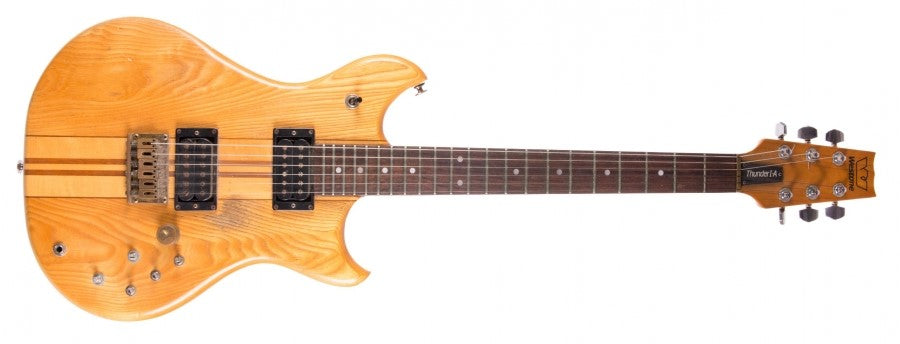In this Guitar Gavel podcast episode we hear from Westone guitar enthusiast and aficionado Keiran Wynyard. A self-described hoarder, not a collector, Keiran walks us through his guitar journey and falling in love with Westone guitars.
Keiran is more than just a Westone superfan, he also manages and co-manages websites, forums, and communities dedicated to the love of Westone guitars. As owner of Westone in UK, Keiran is collaborating with a number of people to restart production of Westone guitars in the near future.
If you are looking for more information about the brand and guitar models please see the amazing resource of links towards the bottom of the newsletter.
Westone Origins
Matsumoku Industrial Co. of Japan started as a family woodworking shop and grew to become a cabinet supplier for Singer sewing machines in 1951.
Ten years later Matsumoku was forced to diversify as the Singer line of business started to wane. Given the company’s level of woodworking talent, Matsumoku became one of Japan’s best guitar builders and went on to produce guitars for over 40 different brands. Some of those brands included Epiphone, Aria, Victor, Washburn, Greco and Vantage.
They were so good that some years later their head engineer, Norikatsu Harayama, built guitar bodies and necks for Kramer, Schecter, and ESP.
The contract business continued to grow, but Matsumoku didn’t create their own house brand until 1975 when they acquired the Westone name rights. Previously the Westone name lived on some one-off guitars in East Germany and through an Italian company named Gherson.
NOTE- the timeline is murky, but in the late 1970s after securing the Westone name, Matsumoku began self-distribution of Westone acoustic guitars.
Enter U.S. based distributor St. Louis Music (SLM). SLM sourced their Electra brand of guitars from Matsumoku and in 1981 a deal was struck for SLM to import and distribute Westone branded guitars to the States. One of the first guitars was the Thunder in 1981 and there were many Thunder models. The earliest were natural wood with neck-through construction that was so popular at the time.
Pictured is the Thunder 1-A from approximately 1983 and even the 1-A as a standalone model saw changes from year to year.
Thunder 1-A specs:
Specs: Laminated ash, maple, & walnut body, 3-ply maple neck, Rosewood fretboard, Hammer humbuckers, 3-way switch, Master volume and tone controls, equalizer volume (knobs missing), Coil tap, phase switch, and bypass switch
(In the same year distribution channels were also set up in various European countries.)
SLM did a pretty good job for the next 10 years. However, in 1987 financial troubles got the best of Matsumoku and the factory closed. Manufacturing moved to Korea and lasted until 1991.
There have been a few iterations of Westone since, but nothing stable.
One of my favorites from the early days (1982) is the Prestige 150 and 250. The 250 was their most expensive offering, original MSRP of $549.
1982 Prestige 250 specs: Mahogany body, Tiger flame maple top, Mahogany set neck, Ebony fretboard, Super Twin 750 humbuckers, Two volume, two PEQ tone controls (setting for a variable single coil tone), 3-way switch, Long Travel bridge, Swiftlok tailpiece
Westone links and resources
Websites:
westone.info
westoneguitars.net
Forum:
westone.forumotion.com
Facebook
Dreamraven Events: https://www.facebook.com/DreamravenEventsSupport
Mogstock Music Festival: https://www.facebook.com/groups/mogstock
The Mighty Matsumoku Westone guitar and bass super group: https://www.facebook.com/groups/494487874274980/
Westone Guitars: https://www.facebook.com/groups/4963678788
Lick Of The Week with Ian Cowan - Blues Lick In E
In Ian’s words: “I’m introducing my particular style of playing but also introducing a form/dynamics of Jazz Blues in the style of Kenny Burrell and Wes Montgomery. It’s a blues phrasing in E, but not your typical area of the neck and not your typical blues lick in E...there are also some unusual chord voicings that you wouldn’t normally expect in blues.”
This one is a little longer because there’s a lot to go over and Ian meticulously breaks it down note-by-note.
Also, the voicing audio is a little low, but crank it up and it’s just fine :-)!






